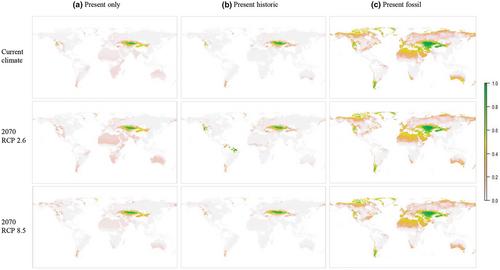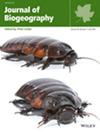Many species have suffered anthropogenic range contraction and no longer occupy all available suitable environmental conditions. This is particularly problematic for the construction of habitat suitability models (HSMs), which assume that a species' contemporary range reflects its full species–environment relationship. HSMs therefore risk underestimating suitable environment areas, and misinforming conservation decisions. Incorporating historic (centuries-old) records partly reduces this bias, but even these records are also subject to human disturbance. We incorporated fossil records of the critically endangered saiga antelope (Saiga tatarica, L., 1776), alongside historic and current records, into current and future habitat suitability models. Saiga has experienced drastic range contraction and may have a truncated species–environment relationship. The results allowed us to test whether its current habitat provides optimal environmental conditions, or whether saiga should be considered a refugee species.
Northern Hemisphere.
Saiga tatarica (Bovidae, Artiodactyla).
We collated historic and fossil saiga occurrence records from published literature, museum archives and global databases. Modern occurrence records were obtained from the International Union for Conservation of Nature Red List assessment. Four bioclimatic variables were downloaded from Worldclim.org. HSMs were generated through Maxent, using the maxnet package in R. Three HSMs were developed: present only, present historic and present fossil. Each of these models was projected onto current and two future (2070) climate change scenarios.
Saiga fossil records increased the predicted suitable environment area by 783% and 1416% for current and future climate projections respectively. Our results suggest the saiga is not a refugee species but occupies only a portion of its potential environmental niche. The saiga's contemporary range is predicted environmentally suitable throughout all models and projections, and therefore in situ conservation management is recommended.
This study highlights the importance of incorporating fossil records into HSMs to better understand species–environment relationships and develop more robust conservation strategies for appropriate endangered species.



